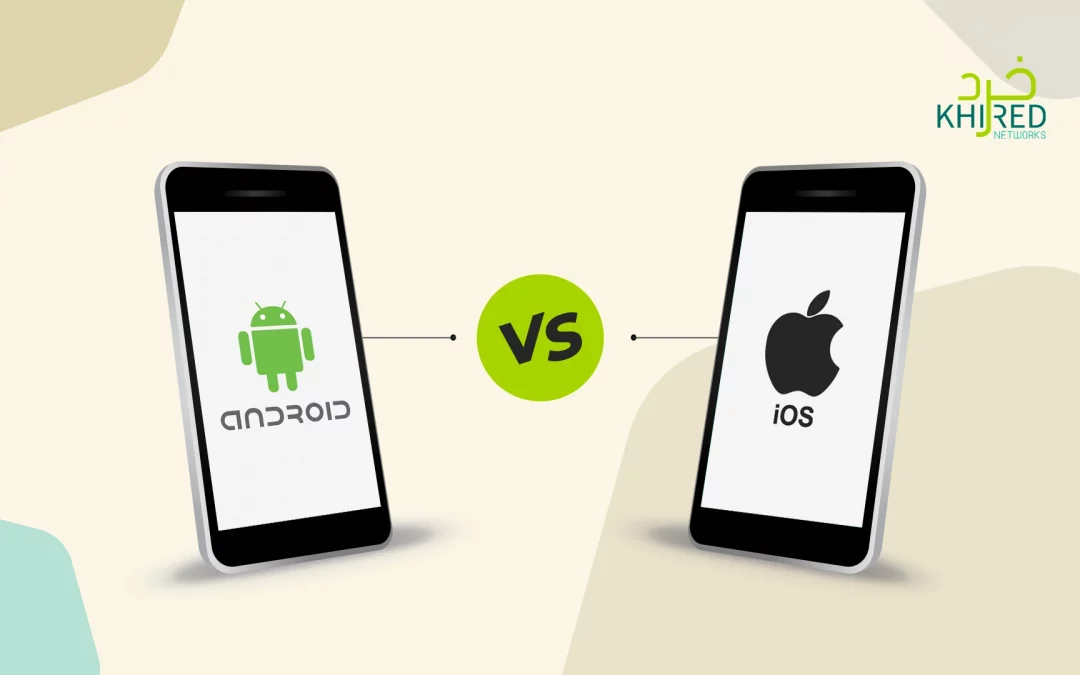Android and iOS are two popular operating systems of mobile apps. Although they have the same structure, certain maintenance and development approaches differentiate them.
So, which is a better option when it comes to Android vs iOS app development?
The choice is very difficult for developers. It’s like choosing a whole new career with different prospects and chances of growth. Each operating system has its unique strengths and weaknesses. At the same time, both have millions of users across the globe.
Google Play Store, for example, has more than 3.3 million Android apps, while the number of iOS apps has crossed 2.02 million as of August 2024.
In this article, we will present brief overviews of Android and iOS app development and look at five major differences to help developers make an informed decision.
So, let’s get started!
What is Android App Development?
Android app development refers to the process of building mobile apps for the Android operating system. These apps are listed on Play Store, the Android marketplace by Google. Android was first released in 2008. In the last sixteen years, it has become one of the most used mobile operating systems running millions of smartphones globally.
Java, Kotlin, and C++ are commonly used programming languages in Android app development. Besides, Android Studio is the official Integrated Development Environment that provides a rich environment with many tools for coding, debugging, and testing.
Android has several benefits. It is an open-source operating system and allows developers to make changes the way they want. You can build Android applications with your desired features and run them on any device, from smartphones to tablets, including smartwatches and TVs.
The diversity in screen sizes also creates some difficulties for Android app developers. They have to optimize their apps on various configurations and resolutions. The Android ecosystem contains various versions of the OS that make development and maintenance even more complex.
What is iOS App Development?
iOS app development involves the creation of apps for Apple devices such as iPhones, iPads, iPods, and Apple TV. This operating system stands out in terms of high security, great performance, and smooth user experience.
For iOS app development, developers mainly use Swift or Objective-C. Besides, Xcode is the officially embraced Integrated Development Environment (IDE) from Apple for iOS app development.
The key strength of iOS app development lies in the consistency of the environment. Since Apple has extended control over hardware and software, developers do not need to optimize iOS apps for various devices or screen resolutions. This consistency makes development less problematic.
Additionally, the App Store ensures extended control for every iOS app which goes through a strict review process for quality and security. Apple has a rather strict set of guidelines that many applications have to follow before approval. Hence, the iOS app development environment is more closed as compared to Android.
Android vs iOS App Development: What’s the Difference?
Here is a detailed Android vs iOS app development comparison highlighting the major differences between these two approaches:
1. Programming Languages and IDEs
The first major difference between Android and iOS app development is their programming languages and environments.
Android developers use Java or Kotlin as the principal languages when developing apps. Kotlin is more preferred these years because of its modern syntax and features. Likewise, the Android Studio is the official Integrated Development Environment. It offers advanced tools for coding, debugging, performance analysis, etc.
On the other hand, most iOS developers rely on Swift, a language created by Apple for performance and safety. Similarly, Xcode is the IDE designed by Apple to build iOS apps. This IDE offers an enhanced development workflow experience.
Hence, Android Studio is more flexible and supports more plugins, Xcode is well-optimized for the Apple ecosystem and offers better integration with iOS-specific features.
2. Development Environment and Device Fragmentation
Since Android is open-source, the device is very fragmented. That means the developers must ensure their applications work across several devices with different screen sizes, resolutions, and hardware availabilities.
This huge fragmentation can even complicate the testing and optimization of Android apps. As a developer, therefore, you have to account for several device configurations and versions.
On the contrary, iOS development is backed up with a more controlled environment. Since Apple manufactures a limited number of devices, developers can better tune their apps to that particular hardware lineup,
Besides, Apple users are more prone to upgrading their OS to the latest versions which reduces the need for support. With such a controlled environment, you can expect better performance and user experience in iOS devices.
3. Market Demographics and Monetization
Another prominent difference between the development of Android and iOS is in the market demographics and monetization strategies.
Android globally enjoys the largest share of the market, particularly across emerging markets. It is, therefore, the preferred platform to target a wide and heterogeneous audience. Conversely, iOS users have higher spending power. Their financial stability accounts for a higher revenue potential coming from in-app purchases, subscription sales, and premium product sales.
Although the user base of Android is larger, the App Store generally makes more money per user compared to the Google Play Store. Eventually, this translates into development for iOS continuing to be more attractive for most developers whose monetization strategies revolve around paid applications or in-app sales.
Android developers, on the other hand, most rely on ad-based models of revenues. These are usually less lucrative but affordable for a broader audience.
4. Design Guidelines and User Experience
The design guidelines and the UX expectations of Android and iOS are also different a lot.
Android has a flat, minimalist design, full of shadows, plenty of animations, and diversified layouts. Developers have more freedom in UI manipulation. However, this freedom may also result in UI inconsistencies in application design across different Android devices.
iOS, however, is dictated by Apple’s Human Interface Guidelines. They emphasize clarity, depth, and deference. As a result, iOS apps feature a more cohesive design language that focuses on smooth transitions, intuitive navigation, and a cleaner, minimalist interface.
Moreover, Apple does not compromise much on its set of guidelines. That’s why iOS apps maintain a consistent user experience across all devices, something Android apps usually lack.
5. App Store Approval Process and Distribution
It is significantly different to distribute an app between Android and iOS.
An Android application can be distributed through different marketplaces such as the Google Play Store or other third-party sources. Users can even download and install Android apps directly from the developer’s webpage. The approval process is relatively easy in the Google Play Store. It enables developers to release updates and new applications in no time.
Alternatively, all iOS apps undergo a tough review process before being published on the App Store. Apple is so famous for its high review standards when it comes to quality and safety of use. This often slows down the publication of an iOS app, but it also gives users more confidence in the applications they install.
However, this strict review process poses a difficult time for iOS developers. Any app with the slightest of violations in the guidelines will be rejected and have to be changed and resubmitted.
| Android App Development | iOS App Development | |
| Development language | Java, Kotlin | Swift, Objective-C |
| IDE | Android Studio | Xcode |
|
Device Fragmentation
|
High | Low |
| Market Demographics | Broader | Smaller |
| Monetization | Ad-based revenue, in-app purchases | Higher revenue per user |
| Design Guidelines | Material Design, customizable | Human Interface Guidelines, consistent design |
| App Distribution | Lenient, multiple distribution channels | Strict, controlled distribution |
Final Thoughts
Android and iOS app development has their own strengths and weaknesses. Android is known for its openness and global availability. These two qualities make Android development an attractive environment for developers to reach a varied audience across different devices.
However, device fragmentation and compatibility issues can hike the time and cost of Android app development.
On the other hand, iOS app development takes place in a controlled, homogeneous environment with a smaller, but more lucrative user base. At the same time, stringent standards and an iron-constrained approval process ensure quality, although it may slow down the development cycle.



